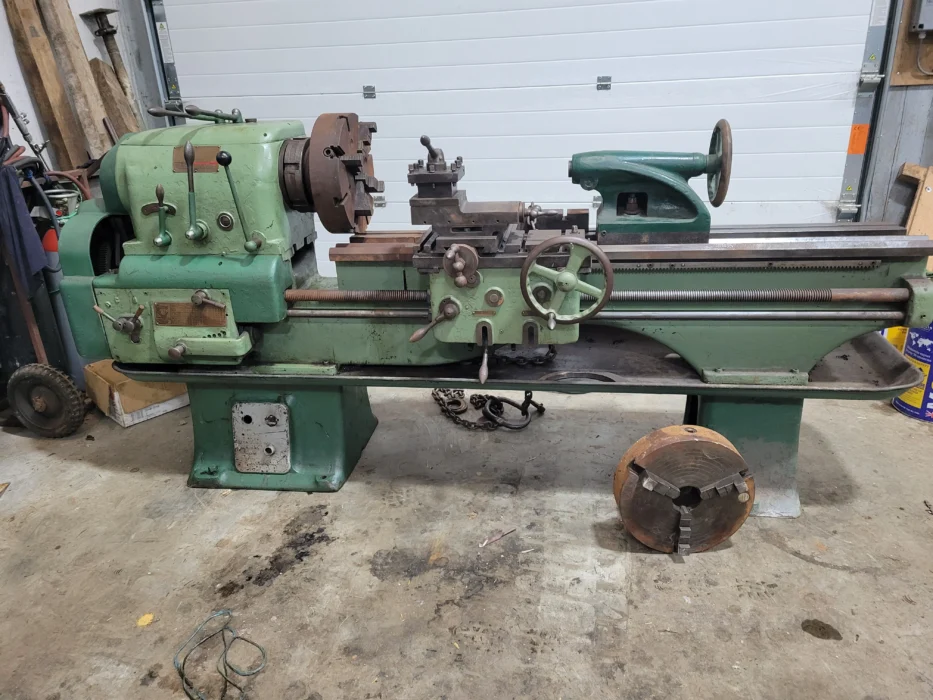Lathes play a pivotal role in manufacturing because they can accurately shape and machine materials like metal, wood, and plastic. These machines have extensive functions including cutting, sanding, knurling, drilling, and turning. Known for their versatility, lathes can perform various tasks that make them fundamental in crafting precision components for numerous industries. To enhance your machining capabilities, consider exploring used metal lathes for sale to find cost-effective options that meet your needs.
Many manufacturing facilities and machine shops rely on lathes because they can handle intricate geometries and produce high-quality, consistent results. Whether creating a prototype for a new product or producing components for heavy machinery, the lathe’s ability to precisely manipulate materials makes it indispensable.
Types of Lathes: Choosing the Right Tool
Numerous types of lathes are available, each designed for specific purposes tailored to different material types and project requirements. The main categories include:
- Engine Lathes: Widely used in general-purpose machine shops, they are known for their simplicity and versatility. They are ideal for various operations, from cutting and sanding to drilling and turning. Due to their straightforward design, engine lathes are often the go-to machine for beginners and small businesses looking to diversify their manufacturing capabilities.
- Turret Lathes: These lathes are perfect for high-volume production of identical parts. Equipped with a turret that holds multiple tools, these machines can perform several operations without stopping and changing tools manually. This setup is incredibly efficient for repetitive tasks, saving time and labor costs, making them well-suited for mass production environments.
- Toolroom Lathes: These precision-focused machines are often found in tool and die shops where the highest degree of accuracy is required. Toolroom lathes are built to maintain extremely tight tolerances, making them ideal for crafting detailed and intricate components. They are typically used for prototypes and specialized parts that require meticulous attention to detail.
- CNC Lathes: Utilizing Computer Numerical Control, CNC lathes offer unparalleled precision and automation. These machines are programmed via computer software to perform highly complex and accurate operations with minimal human intervention. CNC lathes are essential in modern manufacturing, where efficiency and precision are paramount, allowing for intricate designs and reduced human error.
Innovations in Lathe Technology
Technology has significantly evolved, bringing about advanced lathes that continue to set new standards in the manufacturing industry. CNC lathes, for example, have revolutionized the field by enabling more precise, complex operations and significantly reducing the need for manual intervention. These advancements have streamlined production processes, reduced lead times, and minimized waste, making manufacturing more sustainable and cost-effective.
According to a report from Machine Design, integrating IoT and AI in CNC machines is the future, aiming at further efficiency and predictive maintenance. The emerging implementation of the Internet of Things (IoT) and Artificial Intelligence (AI) in CNC lathes promises to take manufacturing to the next level by enabling real-time monitoring, predictive maintenance, and enhanced automation capabilities. These innovations are expected to lead to smarter factories where machines can predict failures before they occur, thereby reducing downtime and increasing productivity.
Furthermore, advancements in materials science have led to the development of new cutting tools and components that extend the lifespan and performance of lathes, ensuring they remain valuable assets for years to come. With continuous technological progress, the future of lathe machining looks increasingly promising and transformative.
Practical Applications of Lathes
Lathes are renowned for their versatility and are used across various industries to create a wide range of products. Some of the practical applications of lathes include:
- Woodworking: Lathes are staples in the woodworking industry, enabling artisans and manufacturers to craft detailed furniture and artistic wooden items. From the legs of a chair to ornate decorative objects, lathes provide the precision and finesse required to shape and finish wooden components.
- Metalworking: Lathes are essential in the metalworking industry for producing engine parts, bolts, and other precision metal components. They machine high-strength alloys and metals into functional parts for automotive, aerospace, and industrial applications, ensuring structural integrity and performance.
- Plastic Turning: Lathes are also used to machine plastic parts for consumer electronics, medical devices, and other specialized applications. The ability to precisely turn plastic materials ensures the creation of high-quality, durable components that meet industry standards and specifications.
Lathes’ adaptability to different materials and tasks makes them invaluable tools in small workshops and large-scale production facilities. Their consistent performance and versatility allow manufacturers to tackle a variety of projects efficiently and effectively.
Lathe Operation: Best Practices and Safety Tips
Understanding the proper operation of lathes is critical for achieving optimal performance and ensuring the safety of operators. Key safety measures and best practices include:
- Wearing appropriate personal protective equipment (PPE) such as safety glasses, gloves, and protective clothing to protect against debris and accidents.
- Ensuring the proper securing of workpieces prevents them from moving or becoming dislodged during machining. Secure workpieces help maintain precision and reduce the risk of accidents.
- Maintaining a clean workspace to prevent accidents caused by clutter and debris. A tidy work area lets operators focus on the task and avoid unnecessary risks.
- Regularly inspecting the lathe for any signs of wear or damage. Routine maintenance checks help identify potential issues early, ensuring the lathe remains in optimal working condition.
CNC Lathes: Advantages and Considerations
With the advent of CNC (Computer Numerical Control) technology, lathes have become more efficient, reducing human error and significantly increasing production rates. CNC lathes are programmed through specialized software to perform precise and complex operations, enabling them to work continuously with minimal supervision.
These machines are ideal for high-volume manufacturing environments where consistency and speed are crucial. CNC lathes can easily handle intricate designs, providing manufacturers the flexibility to create detailed components on a large scale. However, while CNC lathes offer numerous advantages, they also require skilled operators for programming, setup, and maintenance.
Operators must have a thorough understanding of CNC technology and be capable of troubleshooting issues that may arise. Investing in proper training and resources ensures CNC lathes operate efficiently and maintain high performance levels.
Conclusion: The Future of Lathes in Manufacturing
As technology advances, lathes will remain integral to the manufacturing sector. The adoption of CNC and further technological enhancements will drive efficiency and precision. Staying updated with the latest trends and innovations in lathe technology ensures that manufacturers can maintain a competitive edge. Embracing these advancements will enable the production of higher quality products, reduce costs, and improve overall operational efficiency. With the ongoing evolution of manufacturing technologies, the role of lathes in shaping the future of various industries cannot be overstated.





